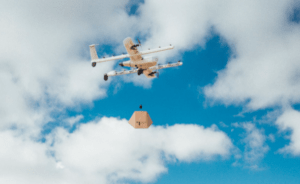 Another name has quietly shown up on the list of providers testing the prototype of the Low Altitude Authorization and Notification Capability (LAANC): Project Wing.
Another name has quietly shown up on the list of providers testing the prototype of the Low Altitude Authorization and Notification Capability (LAANC): Project Wing.
Project Wing is commonly referred to as Google’s drone project, although officially the program is a division of X Development LLC, parent company Alphabet’s research and development subsidiary. They are quiet about their achievements – you won’t often see them onstage with, say, Amazon’s Gur Kimchi, explaining a federated airspace model. Occasionally patent ideas are revealed and speculated upon. But despite their lower profile, Project Wing representatives participate in the Drone Advisory Committee and other advisory groups, and they’ve been developing and testing their technologies, including drone delivery tests in Australia.
Project Wing’s concept is both simple and extraordinary: drone delivery is just a part of what they call a “new commerce system.” “At Project Wing we’re building the next generation of delivery drones, and working toward the day when these aircraft can deliver everything from consumer goods to emergency medicine,” says Project Wing. “We’re also developing an unmanned airspace traffic management platform that will enable our fleet of drones to safely share the sky with other operators. Together we’re building a new commerce system that opens up universal access to the sky.”
So far, drone delivery in the U.S. has remained an idea. Delivery drones are, after all, the least of the hurdles to overcome. That technology already exists, and is getting better – and a vast market of developers can only lead to faster innovation on weight and endurance limitations. But the more complex problem of integrating those delivery drones into a crowded airspace, Unmanned Traffic Mangement (UTM), is something that requires a brilliant technical solution and the harder-to-achieve consensus, not only with government agencies but with other aircraft manufacturers and pilots.
That’s where X’s Project Wing is working to further differentiate itself from other drone delivery projects. As they develop their drones, they are also developing a UTM system and working on exchanging data with airports and other agencies (the LAANC project.) Their presence on the list of providers offering LAANC capabilities shows how far they’ve progressed. While the delivery product isn’t for sale in an obvious way, Project Wing is looking for partners and rapidly expanding. They’re a team that may not be quiet for long.

Miriam McNabb is the Editor-in-Chief of DRONELIFE and CEO of JobForDrones, a professional drone services marketplace, and a fascinated observer of the emerging drone industry and the regulatory environment for drones. Miriam has penned over 3,000 articles focused on the commercial drone space and is an international speaker and recognized figure in the industry. Miriam has a degree from the University of Chicago and over 20 years of experience in high tech sales and marketing for new technologies.
For drone industry consulting or writing, Email Miriam.
TWITTER:@spaldingbarker
Subscribe to DroneLife here.







[…] currently authorized to test the LAANC system for the FAA (the others are currently Skyward and Project Wing,) AirMap has wasted no time in partnering with international companies to introduce the system […]